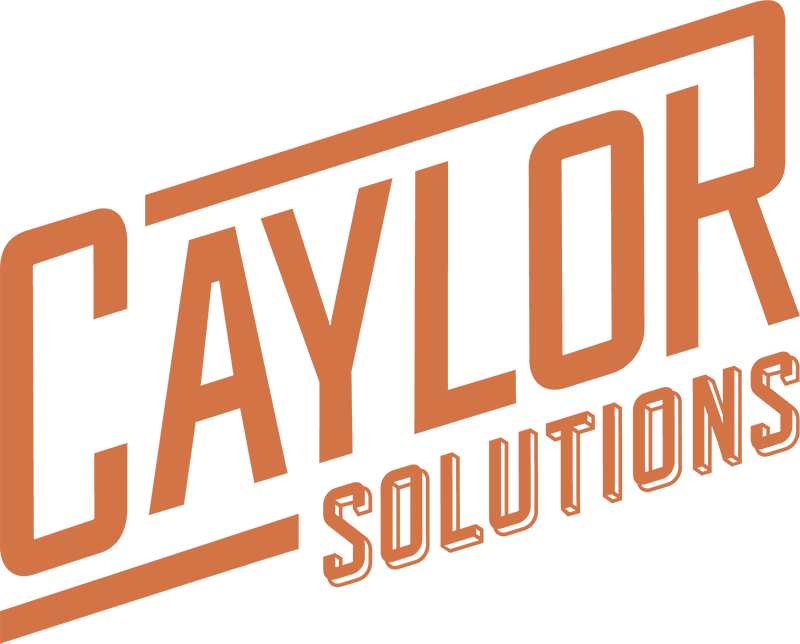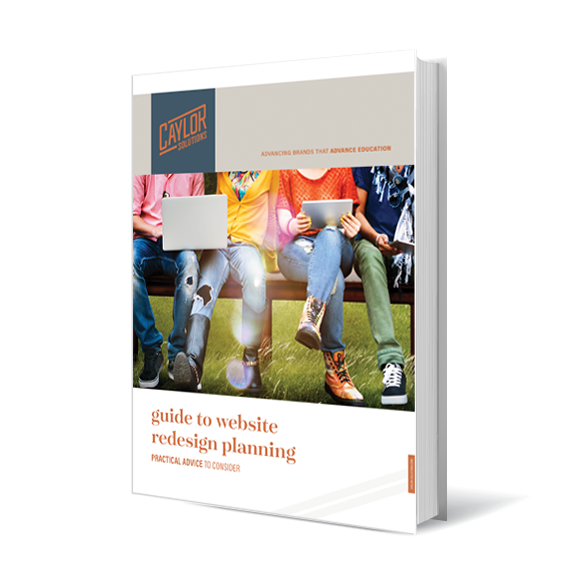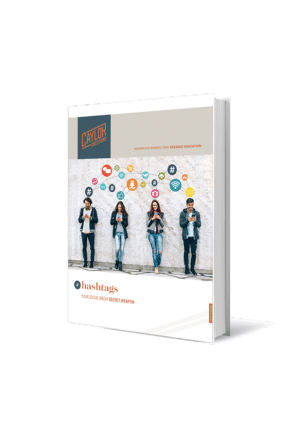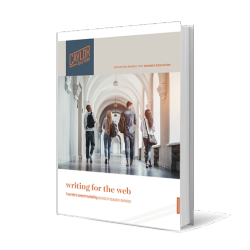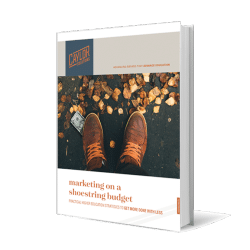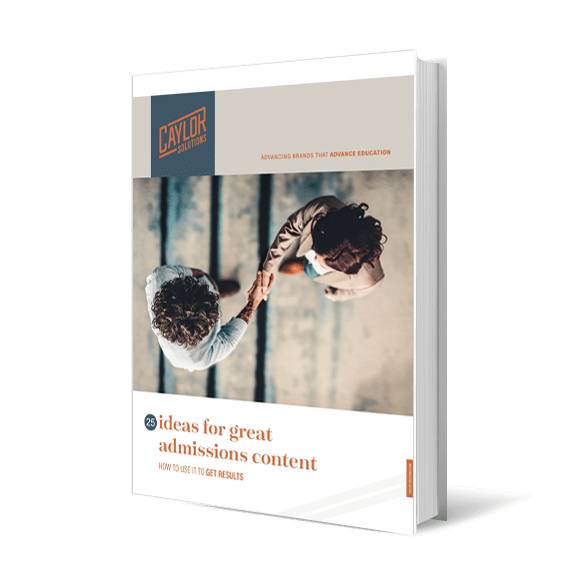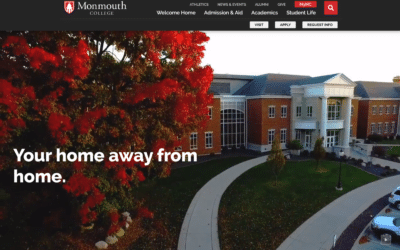If there is one blind spot that those of us who work in higher ed marketing suffer from, it’s the assumption that the benefits of going to college are obvious.
Many of us enrolled in college in an era when it was much safer to make that assumption. But it’s important for us to remember just how much has changed in the last 20 years.
Questioning the Benefits of College
Larry Faulkner, president emeritus of the University of Texas at Austin laid out the sea change that was occurring in higher ed back in 2013. He said institutions of higher learning were still “pretty broadly celebrated” as of the turn of the 21st century.
But within just a few years:
- Web-based technology began to offer less expensive alternatives to traditional, in-person instruction.
- Public support for earlier career training from less expensive community college programs grew as an alternative to four-year colleges.
- The Great Recession following the 2008 financial collapse caused widespread questioning of efficiency and effectiveness of colleges and universities.
These and other factors began to sow doubt in the benefits of traditional, four-year institutions.
Efforts to Defend Higher Ed Have Seen Some Success
What has followed since Faulkner’s 2013 speech is a concerted effort to make the case that yes, a four-year liberal arts degree is worth it. There has certainly been some success. According to a 2017 national survey of college freshmen published in 2019:
- 85% said a bachelor’s degree was “very important” for getting a better job.
- 72% wanted a four-year degree so they could make more money.
- 76% said gaining a general education and appreciation of ideas was also “very important.”
But There Is Still a Lot of Work to Do
There are two important caveats to the data above.
Freshman Satisfaction vs. Prospect Skepticism
One is the powerful influence of confirmation bias on these numbers: Current freshmen are likely to defend the investment in college they have already made.
Meanwhile, much of the public is apparently still skeptical. Despite lots of evidence to support the answer that yes, college is still worth it, studies continue to probe the question.
The Pandemic (of Course)
The other caveat is that this is pre-pandemic data.
A national survey taken in September 2020 revealed just how dramatically the coronavirus appears to have affected public perception of college value and plans to enroll.
Among traditional-aged students:
- 36% said they are less likely than they were pre-pandemic to go to college.
- Just 54% said that having a degree or certificate is extremely valuable. (Compare that figure with the 85% of surveyed freshmen who said so in 2017).
- Only 20% said they were confident about finding a job.
(It’s worth noting that the numbers are a bit better for nontraditional-aged students, with only 28% saying they’re now less likely to pursue higher ed.)
We don’t know yet what the lasting effects of COVID-19 on public perception of college value will be. What we do know is that the pandemic has put higher ed back on our heels for at least the foreseeable future. Like it or not, we’re in a defensive position again.
So, how do we respond? How should you respond as an enrollment marketer?
Reaffirming the Benefits of College
In times like these, when we feel like we’re on the ropes, I suggest we revisit the fundamental marketing and sales concept of benefits vs. features.
Let’s briefly define these terms, just to make sure we’re on the same page:
- A feature is a descriptor of a product or service, what it is or does.
- A benefit is how that makes a difference for the buyer, why the features matter.
Think for a moment about times when all you have to do is list features to sell a product, service or experience. Apple devices, automotive repair, Disney World – when nobody questions the value, you don’t have to make a case. You only have to describe what to expect.
For most colleges and universities (unless you’re an Ivy League school, maybe), listing features in your communications isn’t enough anymore. You have to communicate value. And lists of programs, student-teacher ratios, number of student organizations, etc., don’t. Not alone.
The way to do this is by drawing a straight line to the unique benefits your institution offers, or the benefits your institution offers in a unique way.
Here’s a simple four-step process to help you draw that line.
1. Consider Your Personas
Go back to the drawing board. Who are you trying to reach, and how can you help them?
If you haven’t already created personas, this is a worthwhile exercise. Essentially, the idea is to imagine your ideal student or influencer (e.g. parent, alumnus) and describe them with enough detail that you can speak to this person in a meaningful way.
This is the first step in communicating to your ideal students, which we often refer to as a strong mission fit, that you have more than generally attractive features. You can deliver benefits to those students that matter to them.
2. List the Benefits of College You Offer
Ask yourself why the features you often lead with on your website and in other communications matter to your target personas. This is how you mine the benefits. List them.
- If your target persona is underprivileged, don’t just list scholarships (a feature). Describe how you ease the burden of cost (benefit).
- To reach prospects interested in the arts or sciences, go beyond program descriptions (features). Make connections to career outcomes and fulfilling lives (benefits).
- When speaking to mission-minded prospects, it’s not about academic options (features). Describe how you will help them make an impact in ministry, healthcare, etc. (benefits).
When you list out these benefits, you might be amazed at how much value you see and how little of it you’re currently communicating externally.
3. Make a Benefits-Oriented Brand Promise
Listing out benefits often reveals a pattern that may or may not quite align with your existing brand messaging. You’ll find you keep coming back to the same core idea, a striking promise you can make – or rephrase – that speaks volumes to your prospects.
Here are some examples of brand promises translated into taglines:
Anderson University: “Start your real life.”
AU’s brand promise is about defying the perception that college life is a bubble. Experiences and relationships here are the real deal, leading to meaningful opportunities.
Antioch College: “Own your education.”
The promise here is that you’ll be in the driver’s seat as an Antiochian, shaping your own experience as you put your mark on the campus and on the world.
Davis and Elkins College: “Leading the way.”
This one is fairly simple but no less effective insofar as it is genuine. They promise that as a D&E Senator, you will have numerous opportunities to become the leader you hope to be.
Loma Linda University: “Heroes made here.”
On LLU’s campaign landing page, this health sciences university promises to make a genuine healthcare hero out of every student who aspires to be one.
It takes work to get to a benefits-oriented promise like this, but it’s more than worth it. It’s essential. So is the final step: demonstrating how you fulfill your promise.
4. Deliver Story-Based Content
If your prospects are asking whether college is even worth it, don’t expect them to take your brand promise at face value. High school students don’t internalize taglines. They internalize stories they can see themselves in.
Sometimes that story is about getting your dream job. As UT’s Faulkner pointed out, there have clearly been signs for years that gainful employment is a strong motivator for many.
But that is not the only story to tell.
Researchers Michael B. Horn and Bob Moesta, co-authors of Choosing College: How to Make Better Learning Decisions Throughout Your Life, have conducted numerous surveys to determine why people go to college.
They have discovered students often want to do these five things:
- Get into their best college.
- Do what’s expected of them.
- Get away.
- Step it up.
- Extend themselves.
Even before we do any benefits listing or messaging development, this data speaks volumes about how varied the stories we tell need to be.
Stories about students getting through the admissions process, making their families proud, establishing their new, exciting lives where your school is located, and doing things they didn’t think were possible before are all different kinds of stories we need to be telling.
Add to that your unique, benefits-oriented brand promise, and you become incredibly compelling. You destroy the idea that college might not be “worth it” in a way that no research study proving efficacy in terms of higher median incomes ever can.
You become irresistible.
I’d like to help you revisit, reframe, and reaffirm the benefits of college. Together, let’s make your college or university irresistible.
My team and I love helping schools figure out what makes you uniquely awesome in the minds of your perfect prospects.
It’s not about making you look good. It isn’t about listing the same features in a new package.
What I urge you to do with your team is to look within and mine the features you offer – the programs, the campus, your faculty, everything – for the genuinely powerful benefits they deliver.
If every school communicated their unique version of the benefits of college, nobody would ask anymore whether it’s worth it. They would already know the answer.
Need help with this process? Let’s talk.
Looking for Enrollment Marketing Content that Works?
You’re in luck! We’ve curated 25 awesome ideas inspired by top higher ed institutions across the country and put them in one handy guide: 25 Ideas for Great Admissions Content.
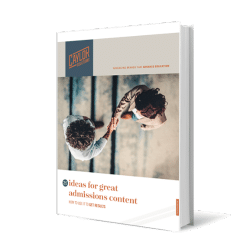
-
- 25 enrollment marketing content ideas you might never have considered before
- Guidance on how to use each one for best results
- Brief discussion on why they work to help you sell these ideas to your team
Get inspired.
Get enrollment results.
Get 25 Ideas for Great Admissions Content.
Download your copy today!
Featured image by Jacob Lund via Adobe Stock
